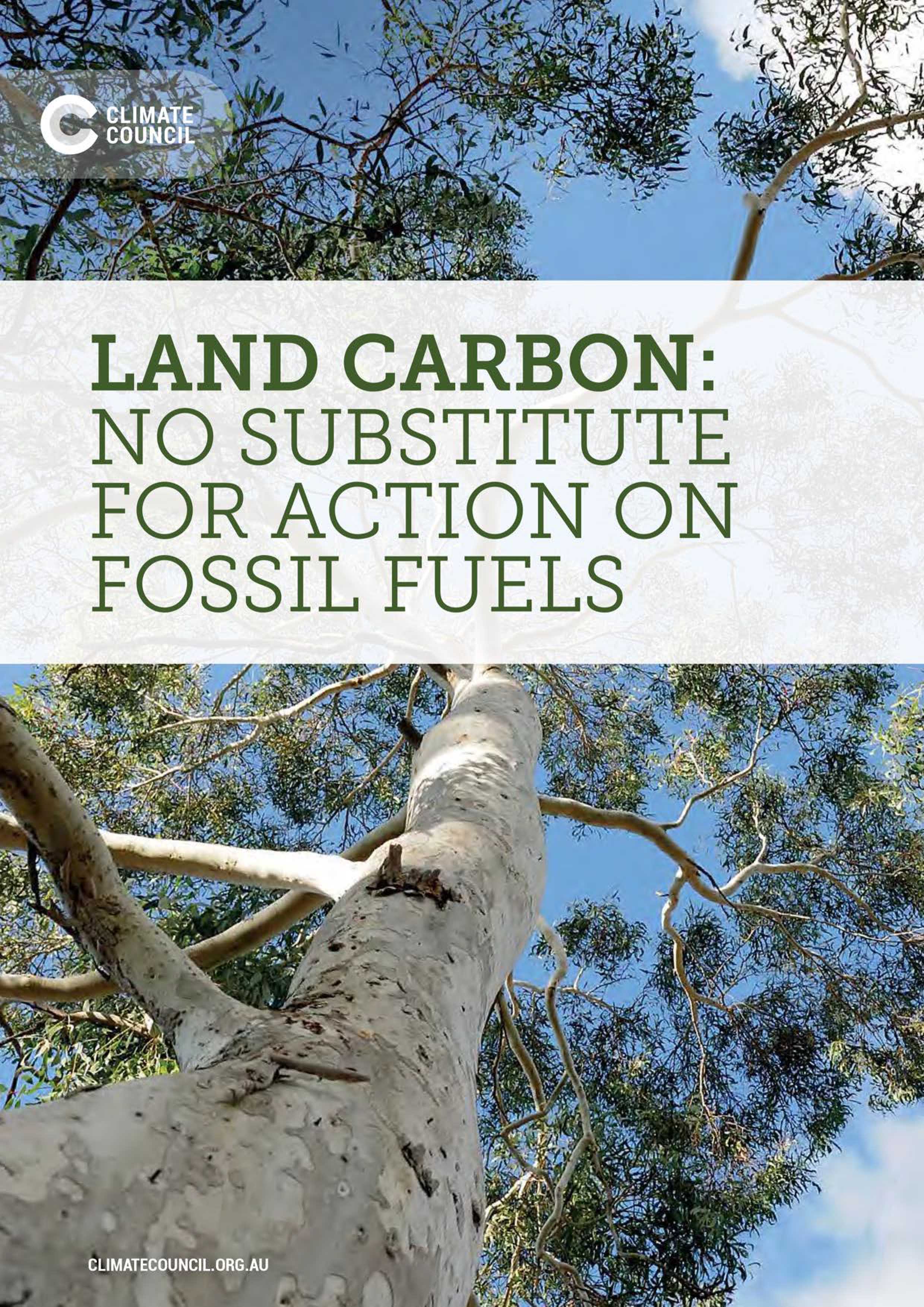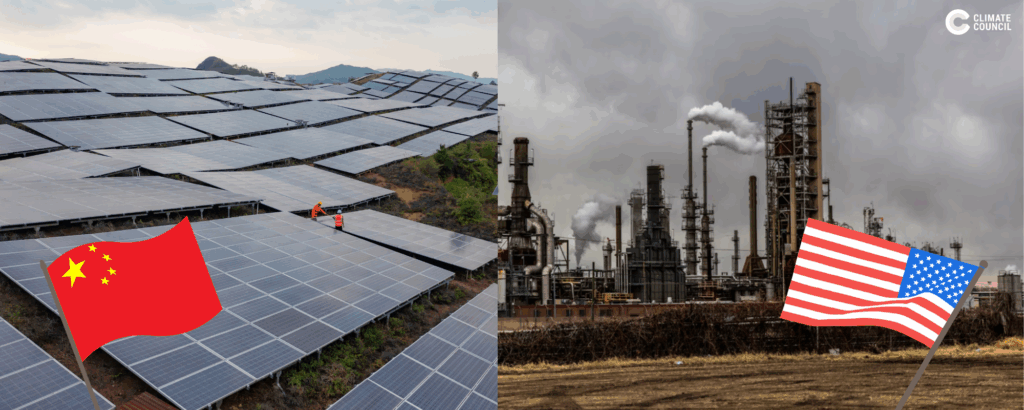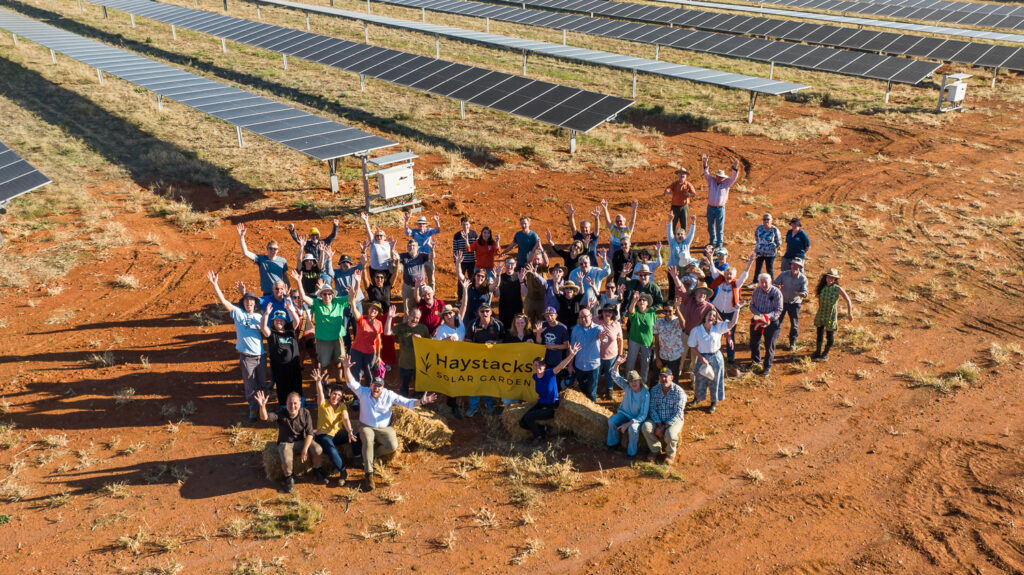Storing carbon in land is no substitute for reducing fossil fuel emissions.
Our new report finds that while increasing carbon in land systems is important, Australia is muddying the waters by combining land carbon and fossil fuel reduction policies – which is giving an inaccurate picture of Australia’s progress in tackling climate change.
KEY FINDINGS
1. Carbon dioxide has a significant and indisputable impact on the Earth’s climate.
- Carbon dioxide (CO2) is the Earth’s thermostat. The more CO2 in the atmosphere, the warmer it gets at the Earth’s surface.
- Today, the atmospheric CO2 concentration is about 400 parts per million, significantly higher than at any other time in the history of humanity.
- This increase in CO2, which is being driven primarily by the burning of fossil fuels, is driving a rapid increase in global temperatures.
2. Land systems can make an important contribution to mitigating climate change by removing carbon dioxide from the atmosphere or avoiding emissions of carbon dioxide to the atmosphere.
- Avoiding clearing of old growth, carbon-rich vegetation and protecting regrowth vegetation are the most effective approaches to mitigating climate change using land systems.
- Maintaining and restoring carbon-rich vegetation has many other benefits, including the protection of biodiversity, the maintenance of water quality, and the enhancement of long-term soil carbon storage.
- Other approaches to landbased mitigation can also be useful. These include improved land management to protect soil carbon, development of sustainable bioenergy systems, and protection of carbon stored in coastal ecosystems (“blue carbon”).
3. Moving carbon from the atmosphere back to the land by planting trees or other means is useful but cannot offset fossil fuel emissions.
- Unlike buried fossil fuels, carbon stored on land is vulnerable to being returned to the atmosphere, for example through bushfires, insect plagues and changes in land clearing policies.
- Increasing the carbon in land systems simply means we are putting back some of the ‘active’ carbon that has been lost to the atmosphere over many years. This is not a permanent way of reducing atmospheric carbon in the long term, and therefore cannot offset emissions of carbon from the burning of fossil fuels.
- Continuing to burn fossil fuels while assuming that these emissions are being offset by increasing land carbon is counterproductive.
- However, sequestering carbon in land systems is still very useful. The challenge is to BOTH reduce fossil fuel emissions deeply and rapidly AND return back to the land as much as possible of the atmospheric carbon that originated from the land.
4. Carbon from fossil fuels has been locked away from the active carbon cycle at the Earth’s surface for millions of years.
- CO2 emitted from burning fossil fuels is additional, ‘new’ carbon that hasn’t been part of the active land-atmosphere-ocean carbon cycle.
- In the active carbon cycle, carbon is exchanging naturally all the time between the land and atmosphere and between the ocean and atmosphere.
- Land clearing and other disturbances, as well as reforestation, can shift large amounts of ‘active’ carbon from the land to the atmosphere and back again.
5. Developing a ‘firewall’ between Australia’s fossil fuel emissions reduction policies and policies to increase carbon uptake on land would provide transparency around Australia’s emissions reduction efforts.
- There should be no offsetting of fossil fuel emissions by increasing land carbon.
- There should be separate reporting of fossil fuel emissions and of land carbon uptake and loss.
- Storing carbon in land can become counterproductive if policy settings allow it to delay or replace fossil fuel emission reductions.
6. Tackling climate change effectively can only be done by reducing fossil fuel emissions.
- The Earth’s capacity to take up excess CO2 from the atmosphere is being outstripped by the rate at which human activities, primarily the burning of fossil fuels, are adding CO2 to the atmosphere.
- Current annual carbon emissions from fossil fuels are ten times greater than the annual amount of carbon that could be stored by sustainable land carbon mitigation methods.











